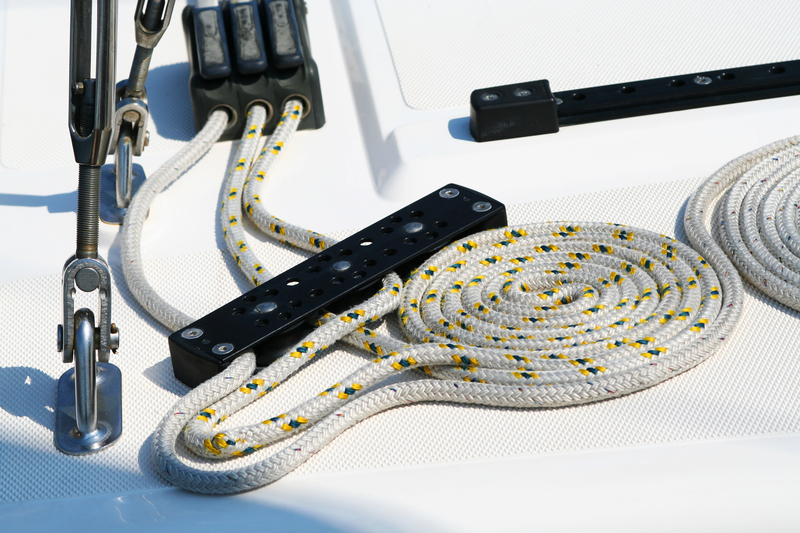Careful Moving of Antiques: A Quick Guide
Posted on 14/05/2025
Careful Moving of Antiques: A Quick Guide
Moving houses can be a stressful endeavor, and when you add antiques into the mix, the stress can multiply. Antiques are often irreplaceable and possess significant sentimental or monetary value. This makes their careful handling paramount. This guide aims to provide you with in-depth knowledge on how to move antiques safely and efficiently.
Understanding the Value of Proper Handling
Antiques are not just old items; they are artifacts of history that can tell stories of bygone eras. Whether it's a family heirloom or a rare piece of furniture, the value of an antique goes beyond its material worth. Improper handling can result in irreparable damage that could lead to a colossal loss. Therefore, comprehending the importance of moving antiques carefully is the first step in ensuring their safety.

Preparing Antiques for the Move
Inventory and Documentation
Before you start packing, create an inventory of all the antiques you own. This will help you keep track of your items and make claims easier should anything go wrong. Take clear photographs from multiple angles and note down any existing damages. This documentation can serve as a reference point during the move.
Cleaning
Make sure that all antiques are clean before you pack them. Dirt and dust can cause scratches or other damage when rubbed against packing materials. Use a soft cloth and mild cleaning agents suitable for the specific material of your antique.
Disassembly
If possible, disassemble large pieces of antique furniture. This makes them easier to handle and reduces the risk of damage. Keep all screws, bolts, and small parts in labeled bags so you can easily reassemble the piece later.
Packing Materials and Techniques
Choosing the Right Packing Materials
Invest in high-quality packing materials. Cheap or inadequate supplies can lead to unfortunate incidents. Below is a list of essential materials you will need:
- Bubble wrap: Offers cushioning and protection against shocks.
- Packing paper: Ideal for wrapping fragile items.
- Foam: Provides additional cushioning, especially for delicate items.
- Cardboard boxes: Opt for double-walled boxes for superior strength.
- Packing tape: Heavy-duty tape ensures that boxes remain sealed.
- Corner protectors: Safeguard the edges of furniture and frames.
Packing Process
When packing antiques, follow a systematic approach:
1. **Wrap in Paper:** Use plain packing paper to wrap each item. Avoid using newspapers as the ink can transfer and damage the antiques.
2. **Bubble Wrap:** After wrapping with paper, use bubble wrap to provide extra protection. Make sure the bubbles face inward for maximum cushioning.
3. **Foam and Corner Protectors:** Use foam sheets or inserts for added padding, especially for extremely delicate objects. Don't forget to use corner protectors for frames and edged items.
4. **Boxing:** Choose an appropriately sized box. Place a layer of foam or bubble wrap at the bottom, carefully place the wrapped item inside, and fill any empty spaces with cushioning material.
Transporting Antiques
Hiring Professional Movers
While the cost might be higher, hiring professional movers with experience in handling antiques can be a worthwhile investment. Make sure to check their credentials, read reviews, and ensure they offer insurance coverage. Discuss your specific needs and concerns with them to guarantee they understand the importance of careful handling.
Self-Transport Tips
If you opt for self-transport, make sure to:
- **Label the Boxes:** Clearly mark boxes containing antiques as "Fragile" and specify which side should face up.
- **Stable Loading:** Place the heaviest items at the bottom and ensure that all boxes are securely tied down to prevent shifting during the journey.
- **Climate Control:** Some antiques are sensitive to temperature and humidity changes. If possible, use a climate-controlled vehicle.
- **Short Trips:** Make frequent stops to check that the items are secure and undamaged.
Unpacking and Setting Up
After successfully transporting your antiques, the unpacking process should be as meticulous as the packing process. Follow these steps:
1. **Inspect Boxes:** Before opening, inspect each box for damage. If you find any, check the contents immediately and document the condition.
2. **Careful Unpacking:** Open each box carefully to avoid cutting or damaging the contents inside. It's advisable to use a dull knife or box cutter.
3. **Reassembly:** If you've disassembled any furniture, carefully reassemble it using the labeled parts you kept aside.
4. **Position:** Place your antiques in their new locations carefully. If they need to be hung, ensure the wall hardware is capable of supporting their weight.
Insurance and Legal Considerations
For valuable antiques, insurance coverage is highly recommended. Consult your insurance provider to find a policy that covers your antiques for the move. Some homeowner policies may already include this, but specific moving insurance can provide additional peace of mind. Keep all documented evidence to support insurance claims if necessary.

Additional Tips for a Safe Move
Use Custom Crates
For particularly valuable or awkwardly shaped antiques, custom crates provide enhanced protection. They are usually available through moving companies or specialty packaging suppliers.
Regular Monitoring
Continuously monitor the condition of your antiques during the entire moving process. This allows for quick intervention if any unforeseen issues arise.
Specialized Storage
If you need to store your antiques temporarily, opt for specialized storage facilities that offer climate control and heightened security measures.
Conclusion
The careful moving of antiques requires meticulous planning and execution. Whether you choose to hire professional movers or handle the process yourself, the key to a successful move lies in the attention to detail. By understanding the true value of your antiques, preparing them adequately for the move, employing the right packing materials and techniques, and ensuring a methodical transport and unpacking process, you can protect your precious items from damage. Following these guidelines can make the daunting task of moving antiques more manageable, allowing you to enjoy your treasured pieces in your new home without worry.





